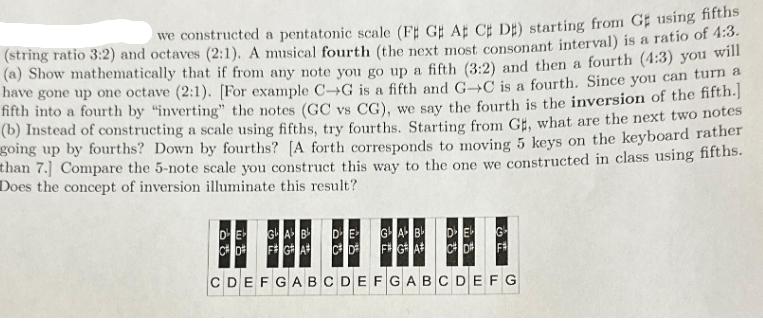Answered step by step
Verified Expert Solution
Question
1 Approved Answer
we constructed a pentatonic scale (F# G# AF CE DE) starting from G; using fifths (string ratio 3:2) and octaves (2:1). A musical fourth

we constructed a pentatonic scale (F# G# AF CE DE) starting from G; using fifths (string ratio 3:2) and octaves (2:1). A musical fourth (the next most consonant interval) is a ratio of 4:3. (a) Show mathematically that if from any note you go up a fifth (3:2) and then a fourth (4:3) you will have gone up one octave (2:1). [For example C-G is a fifth and G C is a fourth. Since you can turn a fifth into a fourth by "inverting" the notes (GC vs CG), we say the fourth is the inversion of the fifth.] (b) Instead of constructing a scale using fifths, try fourths. Starting from G#, what are the next two notes going up by fourths? Down by fourths? [A forth corresponds to moving 5 keys on the keyboard rather than 7.] Compare the 5-note scale you construct this way to the one we constructed in class using fifths. Does the concept of inversion illuminate this result? DE GA B DE C# D# C D F# G# A CDEFGABCDEFGABCDEFG GA B F G A DE G C# D# F#
Step by Step Solution
There are 3 Steps involved in it
Step: 1

Get Instant Access to Expert-Tailored Solutions
See step-by-step solutions with expert insights and AI powered tools for academic success
Step: 2

Step: 3

Ace Your Homework with AI
Get the answers you need in no time with our AI-driven, step-by-step assistance
Get Started


